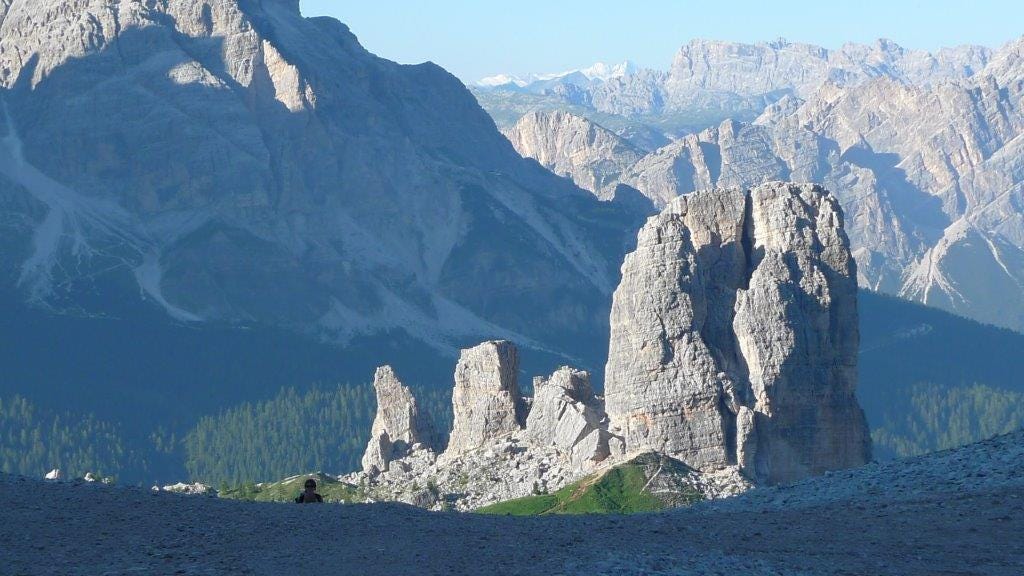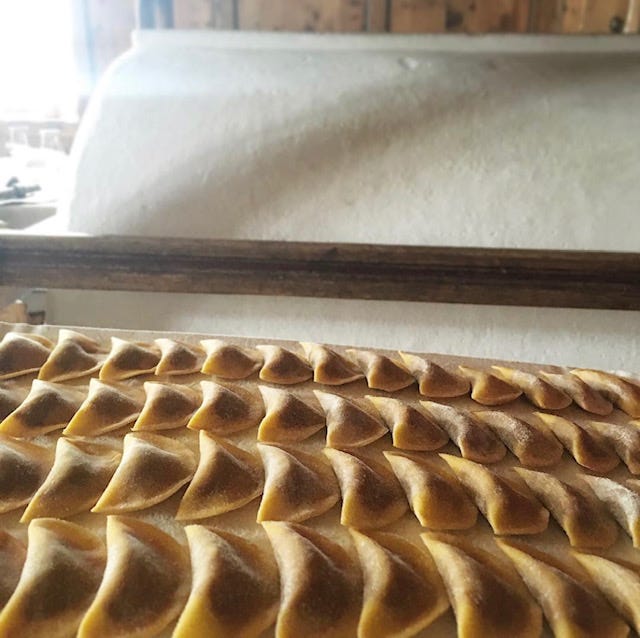Five Questions With: Roberta Segantin
"The Dolomites mountains themselves are a piece of the art of nature"
Five Questions With is an on-going series where we discover unique wine and cultural recommendations from incredible people. This week we’re sitting down with Roberta Segantin, the founder of Sentier Italia. Sentier is a Dolomites-based shoe company that specializes in handcrafted mountain boots and velvet Friulane slippers.
Do you have a bottle recommendation for a wine from the Alps?
Alois Lageder Vernarsch Schiava & Lagrein. Also Girlan Laurin Lagrein & 448 s.l.m. Rosé
Is there a food recipe from the Dolomites that you especially love?
Yes, there are few but probably the most interesting is the "Beet and Poppy Seed Casunziei" aka Casunziei all'Ampezzana. (recipe from Roberta below!)

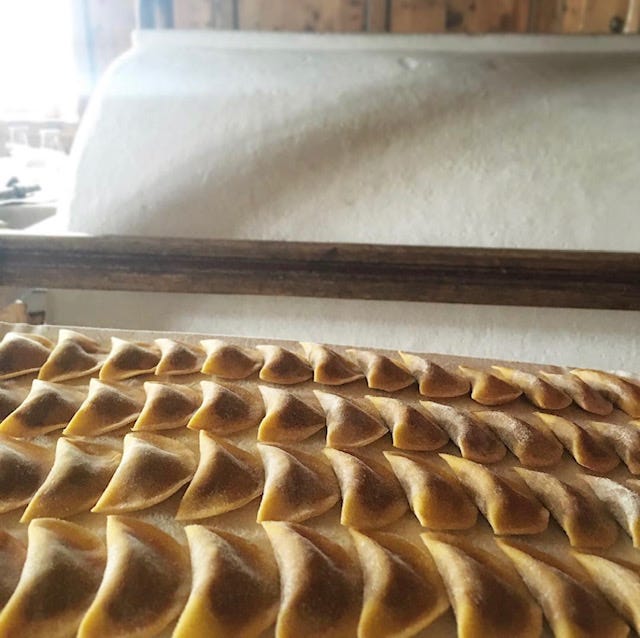
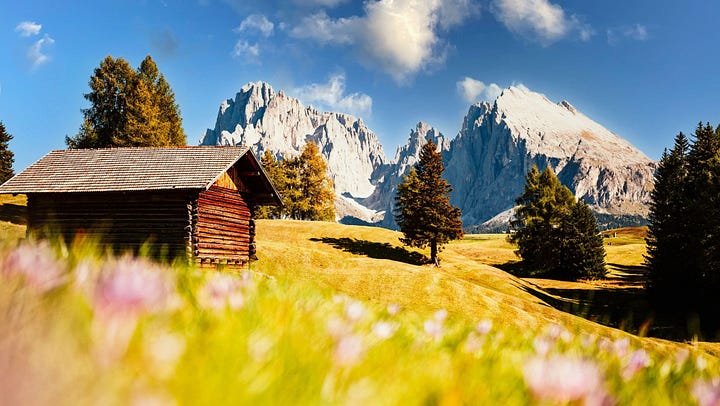

If you could visit any town in the Alps for a holiday, where would you go?
Do you prefer hiking or skiing?
I did ski competition when I was young. I still love to ski but I like hiking a lot too in every season.

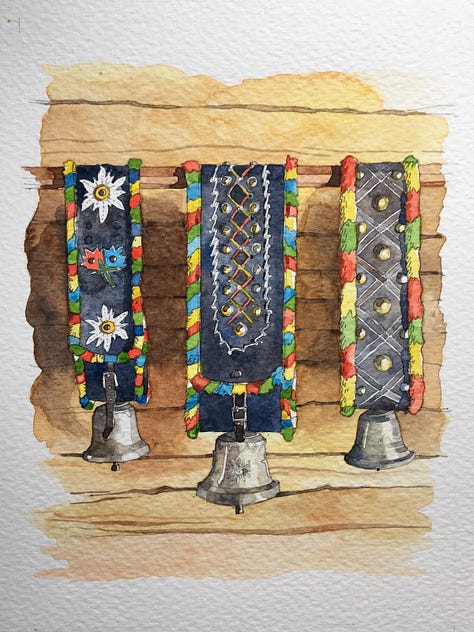
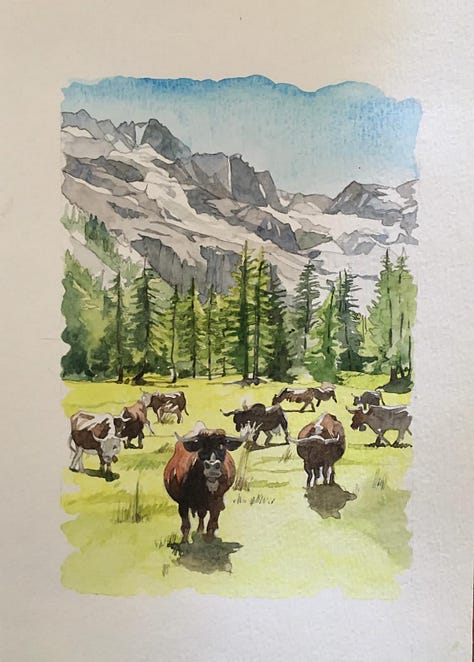
images from Sentier What is a piece of art (painting, book, music, movie etc) that best expresses the Alps for you?
The Dolomites mountains themselves, I think, are a piece of the art of nature
Stay in touch with Roberta and Sentier via their Instagram. To hear more about Roberta’s story, check out our previous interview with her. And below you can find her recipe for "Beet and Poppy Seed Casunziei" aka Casunziei all'Ampezzana.
Sentier Italia's Timeless Journey
A couple years ago, I became entranced by a pair of shoes. The shoes, mountain boots handmade in the Italian Alps by a small company called Sentier, captured my imagination. Rugged and elegant with thoughtful details, they embodied for me a specific type of life spent outside. A life that celebrates adventure in beautiful places but also a certain close…
Beet and Poppy Seed Casunziei (Casunziei all'Ampezzana)
Serves 4 to 6
Casunziei means “filled fresh pasta” in the Ladin dialect, which is mainly spoken in the Dolomites. Not to be confused with the town of Canazei, a ski town in the Dolomites, these beet and potato half-moons are Bellunese in origin, in the Italian region of Veneto, just over an hour southeast of Cortina. I’ve had this dish in two restaurants and both times it was delicious. The first taste was at El Brite, and the second was at Laite, an incredible family-run restaurant in the hamlet of Sappada, on the border of Veneto and Friuli. For those who want to eat incredibly well just off-piste in our Italian Alps map, I gurantee you will fall in love with this restaurant (and family).
The poppy seeds in this dish represent a very Austrian/Friulian ingredient. To underline the influence of flavor, think of the merchants of Venice trading spices from the East—nutmeg, pepper, cinnamon, and poppy seed—this is the Adriatic direction of this dish.
The filling is what makes this dish interesting, as the use of Alpine roots such as turnips, beets, and/or celeriac combined with poppy seeds and potato isn’t what we normally consider Italian flavor. But it is! Welcome to the mountains.
You will need:
Potato ricer or vegetable mill
2-inch (6cm) ring mold or cookie cutter
Pasta machine or stand-mixer with pasta attachment
Filling:
1 pound (450g) beets, unpeeled
12 ounces (340g) russet potatoes, unpeeled
1/4 cup (55g) unsalted butter
1/2 cup (50g) grated Parmigiano-Reggiano or smoked ricotta cheese
Fine sea salt and freshly ground black pepper
Freshly grated fresh nutmeg
1/4 cup (25g) dried bread crumbs
Semolina flour for dusting:
1 recipe mezzaluna dough (see below), rolled out
1/2 cup (110g) unsalted butter
16 to 24 sage leaves
1 tablespoon poppy seeds
1/2 cup (50g) grated Parmigiano-Reggiano cheese
Mezzaluna dough:
2 cups (240g) all-purpose flour, plus more for dusting
2 cups (240g) durum wheat semolina flour or rye flour, plus more for dusting
5 eggs
2 tablespoons olive oil
To make the mezzaluna dough: Spoon both flours onto a clean surface or into a large shallow bowl and make a wide well in the center. Crack the eggs and pour the olive oil into the well. Using a fork, swirl the eggs and oil, slowly incorporating the flour into the center of the well. When the flour is completely incorporated, gather and knead the mixture together to form one large ball. Knead for 5 to 10 minutes on the counter. Wrap the ball in plastic and place in the refrigerator for 45 to 60 minutes to rest.
Heavily dust a baking sheet with semolina flour. Divide the rested dough into fourths. Keep the dough covered while working with one piece at a time.
Roll the dough through the widest roller setting of your pasta machine (or attachment, if you’re using a stand mixer), dusting with all-purpose flour along the way to ensure the dough doesn’t stick, but not too much as you don’t want the dough to become dry. Fold the sheet of dough in half onto itself, and roll it through this initial setting ten to fifteen times, folding it again after each pass.
Change the machine setting to the next, narrower setting and roll the sheet through once. You’ll notice your sheet will become longer and longer as you work it through each successive setting. Keep rolling until Setting 7 (on most pasta machines); you want the sheet to be thin enough to just see your hand through it. Lay the pasta sheet out on the prepared baking sheet. Repeat the rolling procedure with the remaining three pieces of dough.
To prepare the filling: Set a steamer basket over a large pot of boiling water. Add the beets and potatoes and steam until tender (a knife can easily be inserted with no resistance), about 30 minutes. Peel while still hot (using some paper towel to protect your hands) and pass both through a potato ricer.
In a large sauté pan or Dutch oven over medium heat, melt the butter. Stir in the riced beets and potatoes and cook gently until well combined, 3 to 4 minutes. Stir in the cheese and season with salt, pepper, and nutmeg. Add the bread crumbs and stir until the filling is smooth and well combined. Set aside to cool.
After the filling as cooled, dust a work surface with semolina flour and spread the sheets of rolled dough out on it. To form the typical crescent shape, use 2-inch (6cm) ring mold to cut out circles of dough. Place 1 teaspoon of filling in the center of each circle, then gently close each casunziei by folding the dough over the filling and pressing on the edges of the half-circles to seal.
Bring a large pot of salted water to a boil. Gently add the pasta to the pot and simmer until al dente, about 5 minutes.
In the meantime, in a large sauté pan over medium heat, melt the butter. Add the sage leaves and, using a slotted spoon, transfer the stuffed pasta to the pan. Stir gently to coat.
Divide the pasta into shallow bowls, then sprinkle with the poppy seeds and Parmigiano-Reggiano and spoon the sage leaves and melted butter over top of each. Serve immediately.





